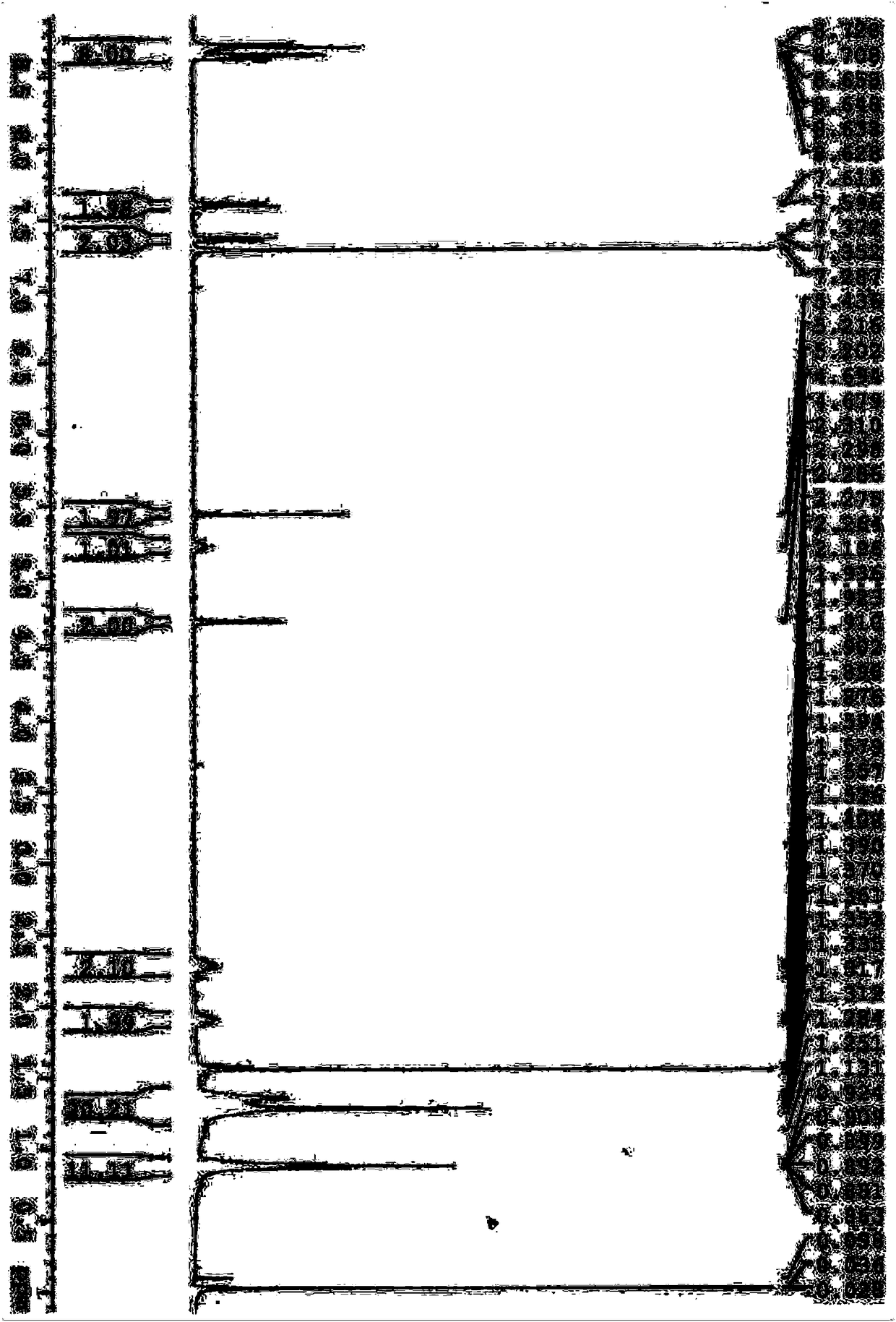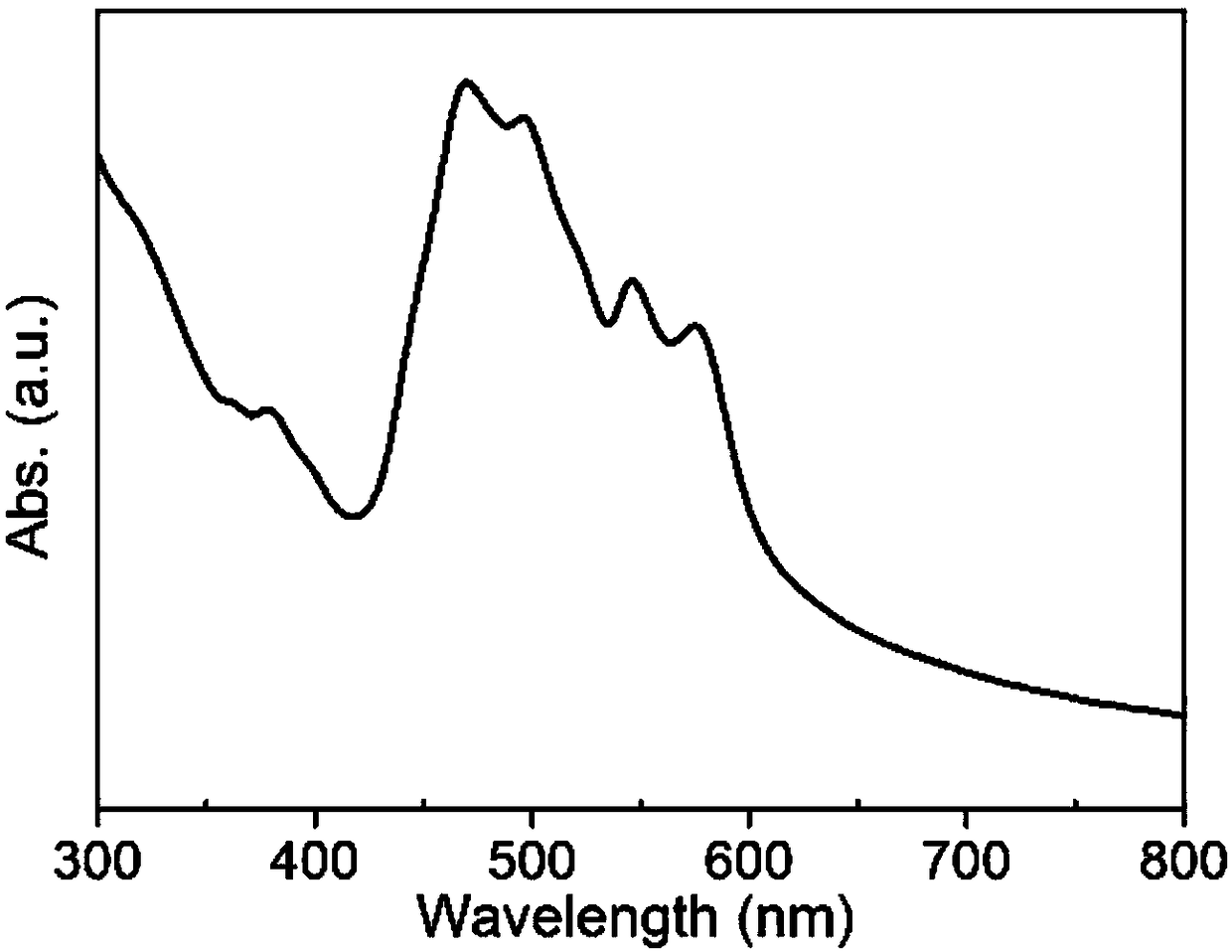One-dimensional organic semiconductor nano material and preparation method and application thereof
A technology of organic semiconductors and nanomaterials, applied in the field of organic semiconductor nanomaterials and their preparation, can solve the problems of specific detection of phosgene organic semiconductor nanomaterials that have not been reported, achieve excellent photoelectric properties and chemical stability, and improve sensitivity strong photochemical stability
- Summary
- Abstract
- Description
- Claims
- Application Information
AI Technical Summary
Problems solved by technology
Method used
Image
Examples
preparation example Construction
[0043] 2. The preparation method of one-dimensional organic semiconductor nanomaterials, comprising the following steps: dissolving the building monomer in a benign solvent, fully dissolving, then adding a poor solvent, standing for 1-3 days, and sucking out the precipitated flocs , when the organic solvent volatilizes naturally, one-dimensional organic semiconductor nanomaterials can be obtained. The monomers are self-assembled in a mixture of a poor solvent and a good solvent through intermolecular π-π interactions to obtain a one-dimensional organic semiconductor material with high fluorescence quantum yield. The above-mentioned one-dimensional organic nanometer material is dispersed in a poor solvent to form a porous membrane with a network structure.
[0044] The volume ratio of the good solvent to the poor solvent is 1:5-1:20; the good solvent is chloroform; the poor solvent is ethanol, ether, n-hexane or n-pentane.
[0045] The length of the one-dimensional organic nan...
Embodiment 1 1
[0063] Embodiment 1 The preparation method of a one-dimensional organic semiconductor nanostructure monomer, specifically comprising the following steps:
[0064] (1) Preparation of intermediate compound B
[0065] Take 100mg of 3,4,9,10-perylenetetracarboximide molecule A and 10g of imidazole and heat to 130°C, then add 80mg of 5-aminononane, react for 1h, then add 500mL of ethanol and 10mL of 36 % concentrated hydrochloric acid, stirred overnight, solids were precipitated, the product was suction filtered to collect the solids, and then the solids were washed to neutrality, and finally the intermediate compound B was obtained after rotary evaporation under reduced pressure.
[0066] (2) Preparation of intermediate compound E
[0067] Dissolve 223mg of compound C and 183mg of compound D in 10mL of dichloromethane solvent, then add 202mg of triphenylphosphine and 200mg of diisopropyl azodicarboxylate, react at room temperature for 2h, add 10mL of water to quench the reaction ...
Embodiment 2
[0076] The preparation method of embodiment 2 one-dimensional organic semiconductor nanomaterials
[0077] Take 0.1 mg of the one-dimensional organic semiconductor nano-construction monomer prepared in Example 1, dissolve it in 10 mL of chloroform, shake it evenly, then add 50 mL of ethanol, and let it stand for 3 days. The floc solid is precipitated in the solution, and the obtained floc is removed with a straw. The solid was placed on a clean glass sheet, and after the ethanol evaporated naturally, the one-dimensional organic semiconductor nanomaterial was obtained.
PUM
| Property | Measurement | Unit |
|---|---|---|
| length | aaaaa | aaaaa |
| width | aaaaa | aaaaa |
| wavelength | aaaaa | aaaaa |
Abstract
Description
Claims
Application Information
 Login to View More
Login to View More - R&D
- Intellectual Property
- Life Sciences
- Materials
- Tech Scout
- Unparalleled Data Quality
- Higher Quality Content
- 60% Fewer Hallucinations
Browse by: Latest US Patents, China's latest patents, Technical Efficacy Thesaurus, Application Domain, Technology Topic, Popular Technical Reports.
© 2025 PatSnap. All rights reserved.Legal|Privacy policy|Modern Slavery Act Transparency Statement|Sitemap|About US| Contact US: help@patsnap.com



